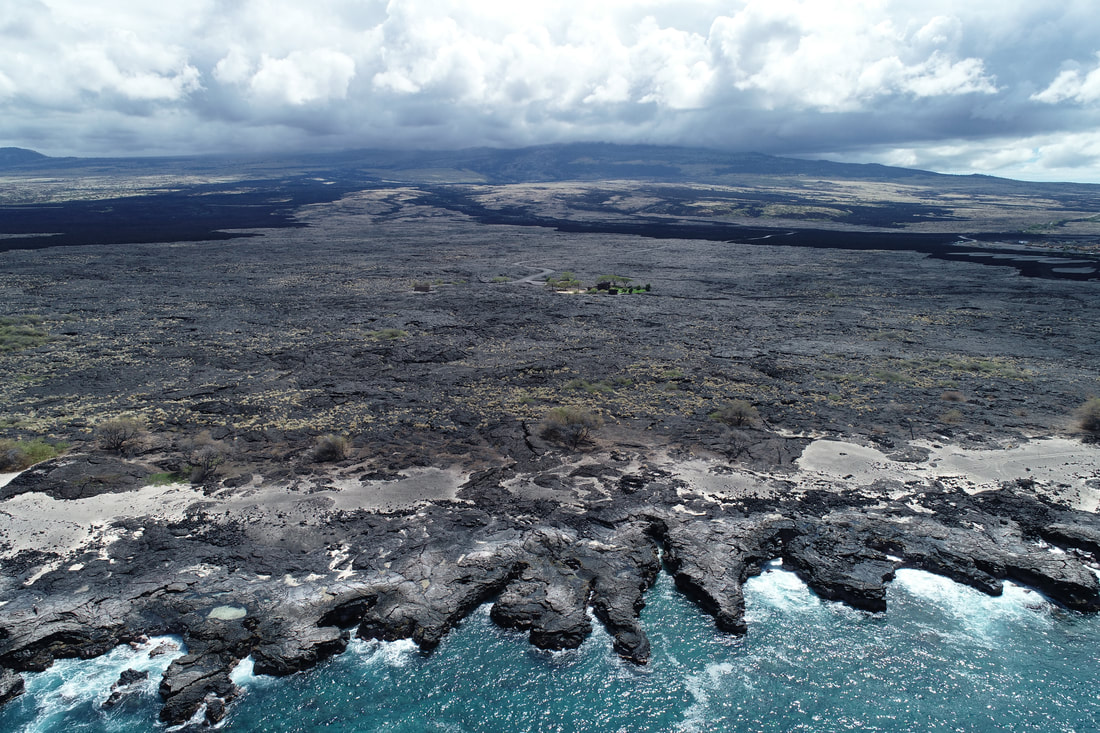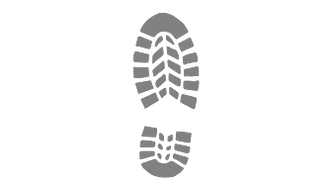|
Kalaemanō is part of the vast landscape of the ahupua'a Ka'ūpūlehu, an ancient land division that sweeps down from the summit of Hualālai, through its forests, and transitions into the grass plains, and onto the lava fields. The historic and beloved area of Kalaemanō makes up the coastal section of Ka'ūpūlehu Ahupua'a, which is filled with many culturally important sites and resources.
Malihini (visitors) are welcomed to learn about Kalaemanō. We ask that all visitors come with humility and respect for the natural and cultural resources that have stood on this land for generations. The cultural sites and natural resources at Kalaemanō are invaluable and irreplaceable, and each of us must do our part to ensure that the generations to come may be able to experience this place. Kalaemanō Cultural ReserveThis 104-acre cultural reserve was set aside to encourage active stewardship and maintenance of the area's resources so that they may be preserved for future generations. This area is highly valued as a traditional fishing and resource collection area. The reserve contains culturally significant archaeological sites from which portions are view-able from the marked public access trail.
|
E mālama i nā kumu waiwai
|
About the AreaTraditionally valued for the fine offshore fisheries and for the snow-white pa'akai (salt) harvested in the natural and man-made salt basins, Kalaemanō is situated at the coast of the ahupua'a of Ka'ūpūlehu . Ka'ūpūlehu is one of twenty-three ahupua'a (a traditional Hawaiian land division) situated in the North Kona region on Hawai'i Island that were collectively known as Kekaha-wai-'ole-o-nā-Kona. This ahupua'a name is a shortened version of Ka'ulupūlehu, which is used interchangeably by native Hawaiian speakers. This name refers to the 'ulu or breadfruit, which is an important food plant introduced to Hawai'i by early Polynesian voyagers.
|
Safety and Warnings
The following rules and warning are in place to help provide visitors with a safe and enjoyable experience.
Public Shoreline AccessCAUTION
Any or all of these conditions may exist. Please use extreme caution. Enter at your own risk. |
Kaʻūpūlehu Marine Reserve
The 3.6-mile stretch of coastline from Kikaua Point to Kalaemanō and extending out from the shoreline to a depth of 120 feet is designated as a "no take" rest area and a "limited take" area from the 120 foot contour out to the 600 foot contour. No fishing or gathering of any kind is allowed within the marine reserve.
|
|
IF IN DOUBT, DON'T GO OUT
This area is significant to the Hawaiian people.
Please show respect and do not touch or remove any of the resources. Community RulesAny person(s) who violate(s) these Rules will be escorted from the property by community security.
Repeat offenders may be denied access. Shoreline access only. Stay on marked path. No trespassing. No pets or animals. No possession of alcoholic beverages, controlled substances, explosives or firearms. No unauthorized vehicles, bikes, scooters, or skateboards. Do not touch or disturb cultural sites. Do not move or take any resources (i.e. stones, sand, and plants) No camping or tents. No dumping, draining, littering or disposal of garbage. No vehicular transportation available to the shoreline. No soliciting, canvassing, begging, bartering or loitering. No unauthorized recreational activities. No loud music or boisterous conduct. |
Preserve Hawai'i's past for Hawai'i's future. Public Access Parking HoursSunrise or 6:00am (whichever is earlier) until
Sunset or 6:00pm (whichever is later). No overnight vehicles permitted. Unauthorized vehicles will be towed. Emergency NumbersHelp us to keep Kalaemanō safe and protected by
anonymously reporting any illegal activities Emergency 911
Community Security (808) 325-4077 Report illegal fishing (808) 643-DLNR |
Come Prepared For
Rough TerrainUse proper footwear. Sturdy hiking boots or shoes are strongly recommended.
|
Sun and HeatDress appropriately and wear
proper sun protection gear. |
Rough Ocean ConditionsOcean conditions can be rough at times so check the local weather report before visiting. There is no lifeguard on-duty to assists in the event of an emergency.
|
Ola akula ka ‘āina Kaha, ua pua ka lehua i ke kai
The Kaha lands thrive when the lehua blossoms are upon the sea.
This 'ōlelo no'eau (Hawaiian proverb) describes the seasonal practice of the Kekaha natives, who during the fishing
season traveled to the shore, where their fishing canoe fleets floated upon the sea like lehua blossoms.
This 'ōlelo no'eau (Hawaiian proverb) describes the seasonal practice of the Kekaha natives, who during the fishing
season traveled to the shore, where their fishing canoe fleets floated upon the sea like lehua blossoms.







